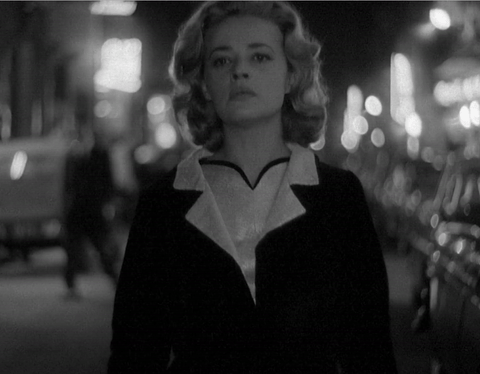
‘Louis Malle was born in 1932 into a wealthy industrialist family in Thumeries, near to Lille in northern France. During the war, he attended a Catholic boarding school in Paris. After leaving school, he began a degree course in political science at the Institute D’Etudes Politiques in Paris, but, against his parents’ wishes, switched to a course on film studies at the Institut des Hautes Etudes Cinematographiques.
‘While still a student, he was recruited as a camera operator by underwater explorer, Jacques Cousteau. He worked as co-director on Cousteau’s celebrated documentary film, Le Monde du Silence (The Silent World) which won an Oscar and the Palme d’Or at the 1956 Academy Awards and Cannes Film Festival respectively, before working as an assistant for his hero, legendary director Robert Bresson on Un condamné à mort s’est échappé (A Man Escaped, 1956).
‘This experience served him well as an apprenticeship for his first feature, Ascenseur pour l’échafaud (Elevator to the Gallows) made in 1957. Not for the last time Malle showed himself an excellent judge of collaborators, working with an array of talent including novelist Rogier Nimier, cinematographer Henri Decae, up-and-coming actors Jeanne Moreau and Maurice Ronet, and jazz genius Miles Davis. Together they took what could have been a routine film policier and turned it into a bitterly ironic, tragic film noir that was a critical and commercial success and established Malle as a young director to be reckoned with.
‘The film also showed, especially in the evocative scenes of her walking down the Champs Élysées at night, the potential of Jeanne Moreau to become a big film star. In his next feature, Les Amants (The Lovers, 1958), Malle confirmed that potential, casting her as the married mother who walks out on her family for a younger man. While more classical in style than its predecessor, its frank for its time sexual content, as well as its moral ambiguity, created a major scandal. In America it was banned in several states leading to a landmark U.S. Supreme Court case regarding the legal definition of obscenity. The scandal helped the film become a worldwide phenomenon, turning Moreau into a major star and Malle, at the age of only 26, into a leading director.
‘Taken by surprise at the film’s success, Malle had a tough time recovering. He was suspicious that the success had not been deserved and for six months he went into hiding, scouting locations for a film that was never shot. When he finally settled on his next project it was a radical change of gear from what had come before.
‘Zazie dans le Métro was a bestseller written by experimental writer Raymond Queneau about a young girl who causes chaos when her plan to travel on the Paris underground is prevented by a strike. Many considered it unfilmable but Malle decided to take up the challenge because he believed it would give him a chance to explore cinematic language in a way he hadn’t been able to before. The result was a high-energy comedy full of wit and invention, which anticipated and greatly influenced the new trend in film style and technique, which would emerge in the ensuing decade.
‘One critic, who wrote favourably about Zazie dans Le Metro, despite its failure with the public, was Francois Truffaut, now an established director himself after the success of the Les Quatre cents coups (The Four Hundred Blows, 1959). Although he was not a member of the inner circle of what had now come to be known as the New Wave, Malle was of the same generation and shared much in common with the other directors, in particular a love for the great auteur directors and a desire to break with what had become routine in French cinema at the time.
‘In the autumn of 1962, he started writing a screenplay about a young man who commits suicide. The story, loosely based on a book by Drieu La Rochelle, who himself committed suicide in 1945, is about a disillusioned, alcoholic writer who has reached 30 and is looking for a reason to go on living. Le Feu Follet (The Fire Within, 1963), featuring a moving performance by Maurice Ronet in the lead role, was highly praised, winning the Special Jury Prize at the 1963 Venice Film Festival. Malle later described the film as one of his most personal and the first of his works that he was completely happy with.
‘At this time, Malle was going through a crisis in his personal life following the break-up of his marriage to Anne-Marie Deschodt and felt unsure about the direction his career was going in. In order to get away from France for a while, he agreed to direct Alain Delon in one of three segments of a film based on stories by Edgar Allan Poe being filmed in Italy. Working with Delon proved difficult however and after completing work on Histoires extraordinaires (Spirits of the Dead, 1968), he felt more disillusioned with the film business than ever, saying at the time that he was “fed up with actors, studios, fiction and Paris.”
‘Malle embarked in the 1970s on three films with adolescent heroes and heroines, living in provincial France, two set in the recent past, one a fantasy set in the near future. For the first of these, Le Souffle au Coeur (Murmur of the Heart, 1971), the directordrew on experiences from his own childhood for a coming of age story about a 14 year old boy growing up in Dijon. Funny, high-spirited and sympathetic with an exhilarating jazz soundtrack, the film nevertheless caused controversy for it’s depiction of incest.
‘His next film was in its way equally controversial, but on a political level: the experience of the war and collaboration in France. Lacombe, Lucien (1974) is about a teenage boy from a peasant family, who, by a series of accidents, gets to work for the Gestapo in a small town. The film was groundbreaking because it was the first to deal with the issue of collaboration in wartime France, challenging the myth that most people resisted Nazi occupation, and provoking a great deal of debate in France on its release.
‘Black Moon made in 1975 was a dark surreal fantasy set in a dystopian future, filmed by the director in and around his own country estate. The free-flowing narrative, reminiscent of Alice in Wonderland, centres on a confused teenage girl who witnesses a war between the sexes and finds herself involved in numerous dream-like situations. Malle later described the film “as a strange voyage to the limits of the medium.”
‘In the late 1970’s, in search of inspiration, Malle moved to the United States. The first film he directed there was Pretty Baby (1978), in which Brooke Shields played a 12-year-old New Orleans prostitute. Once again the newspapers of the world seized on the sensationalist aspects of the story, but, as it turned out, the film was more about atmosphere and the nature of desire, than eroticism.
‘Malle’s next movie, Atlantic City (1980), is often cited as his best American film. It won numerous international awards, including the Golden Lion at the Venice Film Festival and a British Academy Award for Best Direction. Set in the run down seaside resort of the title, the film features a romance between a small time drug courier (Burt Lancaster) and a waitress (Susan Sarandon). Despite its downbeat subject matter the film, due in large part to outstanding performances by the two leads and a memorable screenplay by playwright John Guare, is surprisingly life affirming.
‘There was acclaim too for My Dinner with Andre (1982), a 90 minute film that featured nothing more than a conversation between experimental theatre director Andre Gregory and actor Wallace Shawn, but which, through the skill of Malle’s direction, managed to hold the audience’s attention throughout.
‘Malle’s greatest triumph came with the film he made after his return to France. Au revoir, les enfants (Goodbye, Children, 1987) was an intensely moving account of what happened at the school Malle went to as a boy when the Jewish children the Catholic priest was sheltering were discovered by the Nazis. It won many awards including three French Cesars, for Best Film, Director, and Screenplay.
‘This was followed by the brilliant, satirical comedy Milou en mai (May Madness, 1990) about a family coming together in a country house to hear the reading of a will just as the student riots of May 1968 are raging across the country. His last two films were Damage (1992), a dark love story filmed in London, and Vanya on 42nd Street (1994), a modern adaptation of Chekhov’s play set in New York.’ — New Wave Film
_____
Stills



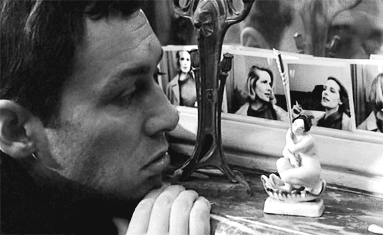





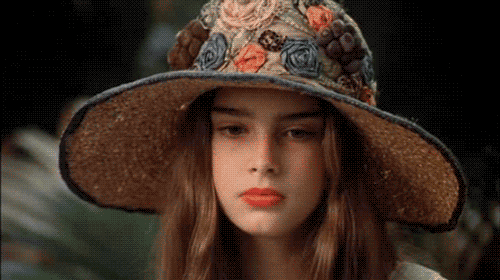


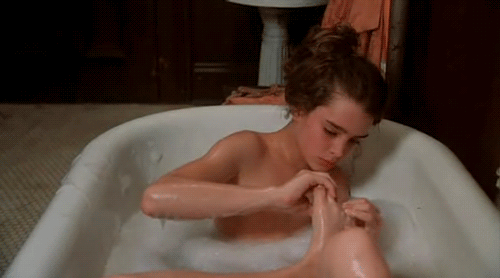




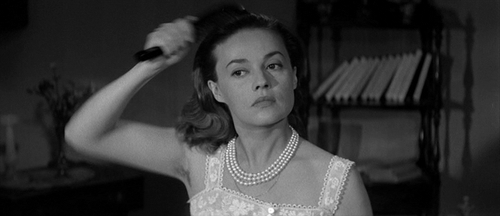

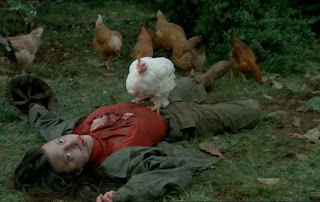














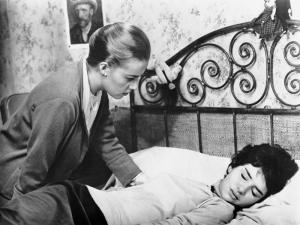


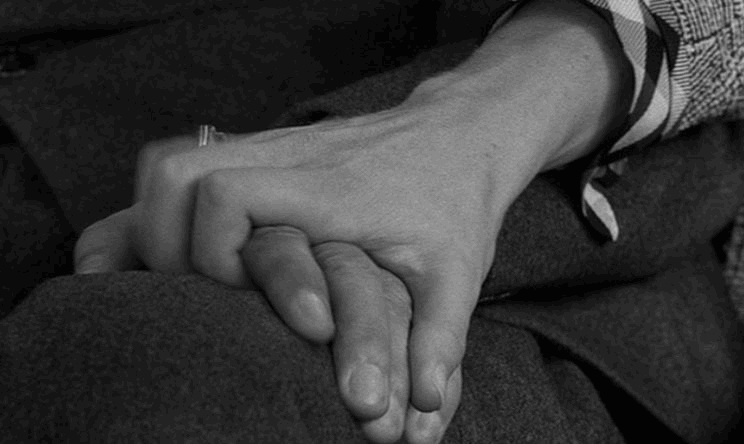



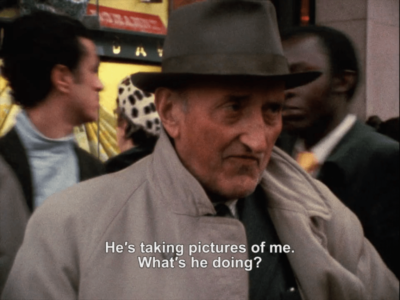



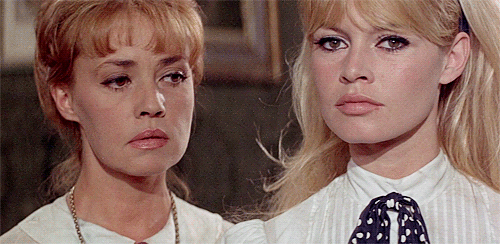


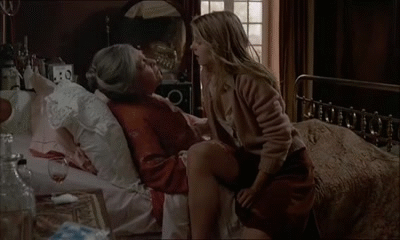





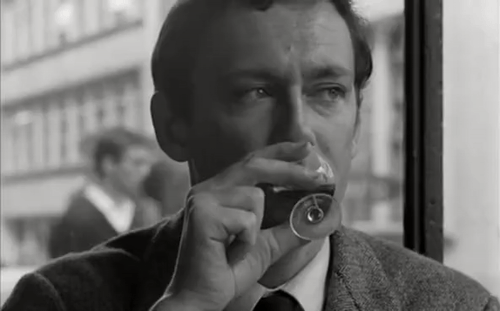
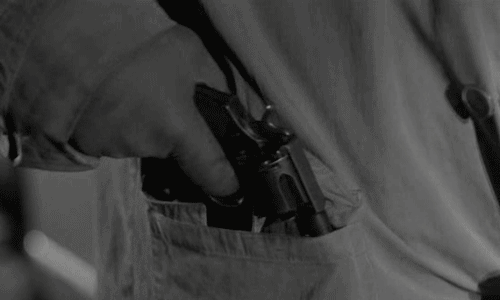

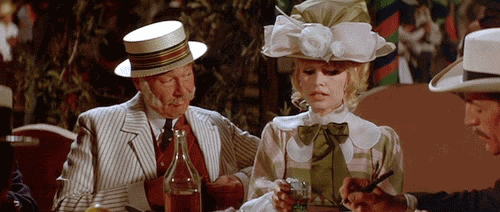
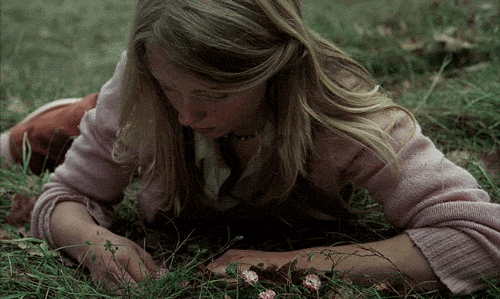
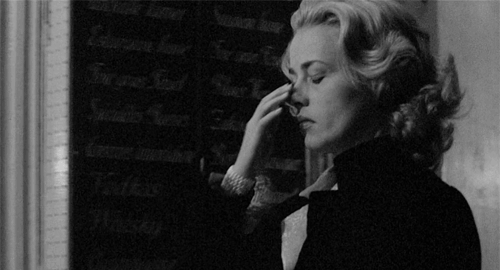
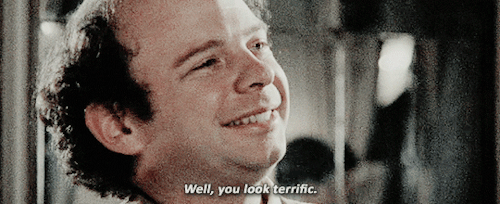
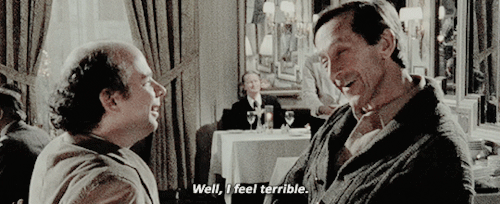
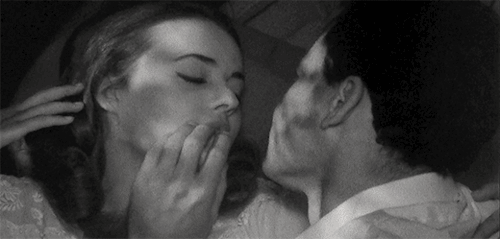





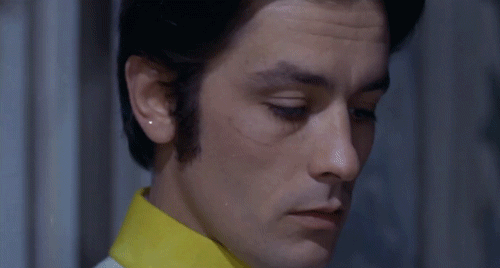


____
Further
Louis Malle @ IMDb
Top 15 des meilleurs films de Louis Malle
Louis Malle @ New Wave Film
Louis Malle’s “Elevator to the Gallows,” and Its Historic Miles Davis Soundtrack
LOUIS MALLE AU PAYS DE DIEU
Louis Malle @ The Criterion Collection
Podcast: Clap sur – Louis Malle
Fonds Louis Malle
CRITIQUE DE FILM; Le Voleur de Louis Malle
Quand Louis Malle filmait le travail à la chaîne
Book: ‘The Cinema of Louis Malle’
LOUIS MALLE, LA MORT D’UN CINÉASTE INATTENDU
Film: ‘Louis Malle, le rebelle’, un film documentaire de Pierre-Henri Gibert
« CHAQUE FOIS QUE JE FAIS UN FILM, J’EXPÉRIMENTE QUELQUE CHOSE »
3 Films by Louis Malle reviewed by Noah Tsik
Au revoir les enfants, toute la pudeur et la culpabilité de Louis Malle
Louis Malle, Equally at Home in France and America, Is Dead at 63
____
Extras
Talking to Louis Malle – Philip French
Louis Malle (1976)
FUNERAL SERVICE OF FILM DIRECTOR LOUIS MALLE
______
Interview

It’s interesting that your films — even when they deal with subjects like an illicit affair (The Lovers) or incest (Murmur of the Heart) or a twisted fairy tale (Black Moon) or child prostitution (Pretty Baby) — are all very chaste.
Ever since The Lovers, I’ve always tried to avoid fucking scenes in my movies because I find them boring, difficult and embarrassing to shoot and to watch. For me it’s practically impossible. I mean, whether you do it or simulate it, you have to repeat it, you have to have ten people around — you have to tell the actors that they’re not in exactly the right place for the light…. It’s extremely boring and it seems to me that it practically never works — to me the exception is Oshima’s In the Realm of the Senses.
I remember the days when the code in Hollywood was very strict and when you had comedies like Pillow Talk, which were the most obscene pictures ever made, without showing anything on the screen. They all revolved around sex, in a very matter-of-fact and obvious kind of way, but of course there wasn’t one explicit scene in any of them. If you have to deal with sex, films like Pillow Talk are a lot more interesting.
So you’re against pornography on aesthetic rather than on moralistic grounds?
Yes, I’ve nothing against it on moralistic grounds at all, it’s just that it’s much more interesting to steal the imagination of spectators by not showing the thing. If we try to go a little deeper, there’s something intensely private about sex — even if you indulge in orgies it has nothing to do with that — but there’s something so… it seems to me it’s never really worked on a stage, as a performance — and God knows that throughout civilization it’s many times become a performance, usually in periods of decadence — but it never really works. It would be interesting to discuss the real explanation: it certainly has to do with aesthetics, and also with the act itself.
Perhaps modesty has something to do with it.
It certainly does. Take Murmur of the Heart: there was no way for me to escape from, at some point, showing that this boy and his mother were making love; if not, there was no movie. Which was extremely difficult for many reasons, especially because the actress who played the mother and the actor who played her son hated each other [laughter]. For a director it was a very difficult situation. I ended up with close-ups of two faces, but obviously the actors had to pretend to some kind of simulation of a sexual act… and I hated to do it… because everybody was very embarrassed. And they were probably embarrassed mainly because of the fakeness of it.
The result was an almost “charming” encounter — just the opposite of an anguished Freudian revelation of a trauma: René Clair instead of Ingmar Bergman.
That’s what I wanted. Actually it worked… with a lot of problems, but it worked. You see, there’s no guilt. One of the key pieces of dialogue in the movie occurs after the events of that night, and the mother talks to the boy and tells him he mustn’t be ashamed of it. In our culture, it’s considered obligatory that sex and guilt come together, which is not necessarily true, although you know, in the script for Murmur of the Heart, I did have some traces of guilt, even unconsciously. In the film, after the boy’s been with his mother, she goes to sleep and he leaves the room, goes downstairs and fucks the little girl he’s been courting for the past two weeks. In the script, however, he went to the bathroom, took the razor blade and started playing with his wrists… and that’s how I first shot it. The idea was to be ironical — I wanted to be ironical about this obligatory guilt feeling. It was interesting, but it just didn’t work. And it didn’t work because the boy who played the part didn’t like the scene, he didn’t want to do it and he didn’t do it well.
There are obvious limits to what a director can do when there’s something that bothers an actor — especially a nonprofessional one — about a scene or a situation or some piece of dialogue. You’re going to be in trouble, so you’d better change it, and that’s what I did. But there was a lot more guilt involved in the first draft of my script.
Why did you make Murmur of the Heart?
Well, I was working on an unfinished book by Georges Bataille called My Mother, which is really a book about incest — very, very erotic, very full of guilt. I worked on it for several months, but wasn’t pleased with it… I couldn’t cope with it, it was much too heavy. And so finally I went to my house in the country, and in the meantime all kinds of memories of childhood came back to me — very personal stuff — and what happened is that one day I started writing and worked for about five days practically nonstop and got to the end of a long treatment with absolutely no plan, no structure. It was a plot based on my own childhood memories, but very much transposed. And then I fought with it for about two months, trying to change it, because I didn’t think it could come forth just like that. But, practically, the picture resembles the initial movement — that surge of things coming out as a story.
What was it your mother said about the film after the saw it?
Well, my mother’s a little crazy, so she said that it brought back so many things to her, which is true, there are so many things from my past in it — the Italian nanny and the three brothers and everything we did. And I did have a heart murmur–it all happened to me. The only vast difference is that I didn’t sleep with my mother — maybe I should have, but I didn’t — and also the characterization of the mother in the film is very different from my mother in real life. Actually, I took it from a friend of mine, a Brazilian woman who, at the time, was having a sort of incredible flirtation with her son. She was very extroverted, very crazy, very warm, very Latin, living in a very stiff, French bourgeois family…and that’s where I got the idea. Lots of people told me I was a coward for not portraying the mother as a Frenchwoman, but I just loved the idea of somebody who couldn’t, even it she’d been there for fifteen years or twenty years, really adjust to the French ways of being a bourgeoise.
What makes films like Murmur of the Heart and Pretty Baby so enticing is that the characters in them are so charming while their relationships are so provocative.
Yes, it’s only the proposition that’s shocking, and that’s what I like. When Murmur of the Heart opened on the Champs Elysées, people coming out of the theater were under the charm of it, but at the same time they did sort of a double take on it, and they’d stop and say, “My God, What did I see?” It’s like forcing people to think about incest — why do we have to put such an incredible weight on it, why has it become such an incredibly heavy taboo? You get all the biological and cultural reasons, there are all kinds of explanations for the taboo. But even today you find out that there’s a lot more incest than is reported.
Look at Buñuel’s films.
And what about Bresson? I know how he chooses his heroines because I’ve worked with him: they’re usually fifteen years old, they’re very bourgeois types — Dominique Sanda being the archetype when she started… She’s older now and she’s lived a little. Anne Wiazemsky. They all look alike and talk alike and…[laughing] I’m talking about my old master, I shouldn’t say that, but it’s so obviously his own fantasy that he expresses in film.
But I want to make the point right away that in my film, you know, I’m not expressing my fantasy when I’m dealing with child prostitution, because actually I’m not sexually… Let me tell you the truth, I’m not sexually titillated by children. Let’s say there’s something of a voyeur in Buñuel, obviously…Well, to me it’s exactly the opposite. I’ve many times made films about adolescents dealing with adults, and I’ve always tried to put my camera exactly the other way…I’m always trying to have the children look at the adults. It’s true in Pretty Baby, just as it was in Murmur of the Heart and Lacombe, Lucien… and also when I was shooting many scenes of Phantom India — that’s where I found it, the trick I’ve been using since, of having people look at the camera. You come to see them, but they look at you. And in Pretty Baby you have those shots of Violet looking at you. That’s my point, because in this disordered and decadent period in which we live it’s fascinating to watch people who are coming of age having to deal with this world of hypocrisy and preconceived values and having nothing to do with any of it. They’re just there because they’ve always been there, and just their look is a judgment. If there’s anything moral in my pictures, you have to find it in the close-ups of those children in my films looking at you. That’s where it is, there’s nothing else.
_________________
15 of Louis Malle’s 33 films
_________________
Crazeologie (1953)
‘This short student film is the first credited work of Louis Malle, and is noteworthy for that bit of history only. Described as “an attempt at cinematographic depiction of the absurd in theater and literature,” Crazeologie employs some of the subtle, conversational humor of Malle’s later work. Largely unremarkable, the choice to name the film after a Charlie Parker work suggests Malle’s awareness and appreciation for jazz, which would later inform his decision to use Miles Davis’ improvised score for his masterful debut, Elevator to the Gallows. It may have taken another 4 years, but it is hard to believe that Malle would come from these humble roots to create such a confident, outstanding debut feature as Elevator to the Gallows.’ — Matthew B, letterboxd
the entire film
_______________
Elevator to the Gallows (1958)
‘“Elevator to the Gallows” isn’t a New Wave film, but it is significant for its proto-New-Wavishness, its efforts toward originality and modernity. More specifically, such incidental elements as a big American car and the theft of that big American car, the accidental discovery of a handgun in the glove compartment of that car, the thief of that car committing a murder with that gun and going on the run in Paris with his young and innocent girlfriend, the young woman’s cramped one-room apartment, the record player and art poster in the apartment, the classical music playing on the record player as she and her boyfriend go to bed, the fugitive who sees his picture on the front page of a newspaper—all of these details should seem familiar, because they all turn up in Jean-Luc Godard’s “Breathless,” which came out two years later.’ — Richard Brody
Trailer
Excerpt
Miles Davis Records the Score for ELEVATOR TO THE GALLOWS
_______________
The Lovers (1958)
‘Louis Malle unveiled the natural beauty of Jeanne Moreau in his breakthrough, Elevator to the Gallows. With his follow-up, the scandalous smash The Lovers (Les amants), he made her a star once and for all. A deeply felt and luxuriously filmed fairy tale for grown-ups, perched on the edge between classical and New Wave cinemas, The Lovers presents Moreau as a restless bourgeois wife whose eye wanders from both her husband and her lover to an attractive passing stranger (Jean-Marc Bory). Thanks to its frank sexuality, The Lovers caused quite a stir, being censored and attacked for obscenity around the world. If today its shock has worn off, its glistening sensuality and seductive storytelling haven’t aged a day.’ — Criterion Collection
Excerpt
______________
Zazie dans le métro (1960)
‘Welcome to the dizzying world of Zazie in the Metro, a film by Louis Malle based on the novel by the genius of experimental literature Raymond Queneau. Zazie is a young girl with a mission: to come to Paris and ride the Metro. Much to Zazie’s dismay however the Metro is closed due to a strike. Not that it will stop our heroine from diving headfirst into the chaos of the city. A riot of colour, wordplay and cartoon-like activity, the film brings to life the playful spirit and frenetic energy of the book. Full of jump cuts, speeded up scenes and slapstick comedy with moments of sublime surrealism (see the ship captain hit by a wave on the Eiffel Tower or the pearl that Zazie finds in a mussel), it’s a joyful merry-go-round that never lets up.’ — Books, film & bloudjinnzes
Extract
Malle sur “Zazie dans le métro”
________________
The Fire Within (1963)
‘After garnering international acclaim for such seminal crowd-pleasers as The Lovers and Zazie dans le métro, Louis Malle gave his fans a shock with The Fire Within (Le feu follet), a penetrating study of individual and social inertia. Maurice Ronet (Elevator to the Gallows), in an implosive, haunted performance, plays Alain Leroy, a self-destructive writer who resolves to kill himself and spends the next twenty-four hours trying to reconnect with a host of wayward friends. Unsparing in its portrait of Alain’s inner turmoil and shot with remarkable clarity, The Fire Within is one of Malle’s darkest and most personal films.’ — The Criterion Collection
Trailer
Excerpt
____________
Calcutta (1969)
‘When he was cutting Phantom India, Louis Malle found that the footage shot in Calcutta was so diverse, intense, and unforgettable that it deserved its own film. The result, released theatrically, is at times shocking—a chaotic portrait of a city engulfed in social and political turmoil, edging ever closer to oblivion.’ — The Crierion Collection
the entire film
_______________
Murmur of the Heart (1971)
‘Murmur of the Heart is overwhelmingly Oedipal, and it would be easy to point out incest as both a primary theme and the ultimate point of the film. This is a mistake. There is a certain amount of shock value in Laurent and Clara’s relationship, and the final act of the film, where a jealous tension builds between Laurent and Clara’s unseen lover intentionally does not shy away from its depiction of illicit sexuality, but Malle does well to keep the tone gentle and innocent. A scene where Laurent lays out his mother’s undergarments in her shape while she is away, giving him a tangible, temporary, surrogate mother, speaks simultaneously to his youth and his budding sexuality.’ — popoptic
Trailer
Louis Malle discusses ‘Murmur of the Heart’
_______________
Lacombe, Lucien (1974)
‘With a superb music score by Django Reinhardt, this is a Louis Malle film about the German occupation of France. Based on his own experiences in France during the occupation, Malle’s film does not paint a pretty picture of the French Resistance and eventually he emigrated to America because of the critical reaction to this film. Essentially the tale of a young boy who wants to join the Resistance but is shunned by them because of his youth, he joins the Gestapo. Unfortunately, he then falls in love with a young Jewish girl. Push comes to shove and he suddenly has the unsympathetic Resistance and the Gestapo hot on his trail. Not a pretty picture of either side.’ — RT
Trailer
Excerpt
_______________
Place de la République (1974)
‘In Place de la République (1974), Malle takes a more direct approach to the lives of working people, simply training the camera and microphone on anyone who happens to stroll by one short stretch of sidewalk in a working-class neighborhood of Paris. Malle asks them questions about themselves and playfully comments on the camera’s role in the film. The result is a surprisingly penetrating examination of the very real, material factors that affect people’s happiness. Money, race, religion, sex—they’re all there in this elegant experiment, which embodies the curious, compassionate sensibility that informed all of Malle’s films, and especially his documentaries.’ — Michael Koresky
Excerpt
_______________
Black Moon (1975)
‘Louis Malle meets Lewis Carroll in this bizarre and bewitching trip down the rabbit hole. After skirting the horrors of a mysterious war being waged in the countryside, beautiful young Lily (Cathryn Harrison) takes refuge in a remote farmhouse, where she becomes embroiled in the surreal domestic life of an extremely unconventional family. Evocatively shot by cinematographer Sven Nykvist, Black Moon is a Freudian tale of adolescent sexuality set in a postapocalyptic world of shifting identities and talking animals. It is one of Malle’s most experimental films and a cinematic daydream like no other.’ — The Criterion Collection
Trailer
Excerpt
______________
Pretty Baby (1978)
‘Despite the scandalised yelps about child pornography, a film of disarmingly subversive innocence, set in a New Orleans bordello (1917 vintage) where the pretty baby of the title eagerly awaits her twelfth birthday and the deflowerment which will inaugurate her career. All red plush, ragtime and Renoir nudes, it would be candy confection except that vice is viewed here partly through the enchanted eyes of the child (Shields), partly through the candid camera of a photographer (Carradine) who sees flesh and its desires as the stuff of art and beauty. The Nabokovian relationship between these two asks some very pertinent questions about the hypocrisy of conventional morality.’ — Time Out (London)
Trailer
Excerpt
_______________
Atlantic City (1980)
‘Playwright John Guare wrote Atlantic City, which he came up with when Malle told him that he had the funds to make a film but no script to shoot. That spontaneous quality works in favor of what’s essentially a character sketch, more interested in the texture and tone of its title city than in delivering plot twists. That said, Atlantic City does tell a story, which becomes especially gripping down the stretch, when Sally and Lou are on the lam, playing for bigger stakes than any they’ve been involved with before (but petty in the larger scheme of things). This is a gentle, warm, well-acted movie, and easy to like. Post-Venice, Atlantic City went on to land five Oscar nominations—but didn’t win anything in the year of Chariots Of Fire and On Golden Pond, two other films that straddled the line between arthouse and mainstream. Nevertheless, it remains a sensitive portrayal of two people united by their commitment to each other’s vision of who they should be.’ — The AV Club
Trailer
Excerpt
Wallace Shawn talks with Louis Malle about Atlantic City
________________
My Dinner with Andre (1981)
‘In this captivating and philosophical film directed by Louis Malle, actor and playwright Wallace Shawn sits down with his friend the theater director André Gregory at a restaurant on New York’s Upper West Side, and the pair proceed through an alternately whimsical and despairing confessional about love, death, money, and all the superstition in between. Playing variations on their own New York–honed personas, Shawn and Gregory, who also cowrote the screenplay, dive in with introspective intellectual gusto, and Malle captures it all with a delicate, artful detachment. A fascinating freeze-frame of cosmopolitan culture, My Dinner with André remains a unique work in cinema history.’ — The Criterion Collection
Excerpt
Excerpt
______________
Au Revoir les Enfants (1987)
‘Louis Malle’s quasi-autobiographical masterpiece Au Revoir Les Enfants from 1987 is now re-released in cinemas in the same week as Holocaust Memorial Day. It remains breathtakingly good. There is a miraculous, unforced ease and naturalness in the acting and direction; it is classic movie storytelling in the service of important themes, including the farewell that we must bid to our childhood, and to our innocence – a farewell repeated all our lives in the act of memory. As an evocation of childhood it is superb, comparable to Jean Vigo’s Zéro de Conduite and François Truffaut’s The 400 Blows – perhaps better. Every line, every scene, every shot, is composed with mastery. It has to be seen.’ — The Guardian
Trailer
Excerpt
________________
Vanya on 42nd Street (1994)
‘In the early nineties, theater director André Gregory mounted a series of spare, private performances of Anton Chekhov’s Uncle Vanya in a crumbling Manhattan playhouse. This experiment in pure theater—featuring a remarkable cast of actors, including Wallace Shawn, Julianne Moore, Brooke Smith, and George Gaynes—would have been lost to time had it not been captured on film, with subtle cinematic brilliance, by Louis Malle. Vanya on 42nd Street is as memorable and emotional a screen version of Chekhov’s masterpiece as one could ever hope to see. This film, which turned out to be Malle’s last, is a tribute to the playwright’s devastating work as well as to the creative process itself.’ — The Criterion Collection
Trailer
Excerpt
*
p.s. Hey. I only found out after I’d launched yesterday’s post that an exhibition of Emma Kunz’s art will open at the Serpentine Gallery in London later this month if you’re there and interested. ** David Ehrenstein, Really glad it interested you. ** John Fram, Well, hi there, John! Good to see you! No doubt I’ve said this before but having another novel or project underway when a book comes out is highly recommended as a way to cope with the stress and how different getting a book published is from how you hope/imagine it will be. The worst thing you can do to yourself is to speculate about your future career since that’s 100% unpredictable and out of your hands. Or that’s how I deal with that stuff. Yeah, ‘Please Kill Me’ is really great book. Uh, I started going to NYC semi-regularly in the late 70s and moved there in ’83, by which time New Wave was the big thing. The punk scene I knew very, very well and was involved in is the LA wing. It was lovely seeing you too. Very best of luck re: coping with the weird interim phase. ** Corey Heiferman, Yeah, how about that. Well, superb news about you starting film school this year, man. You’ll be ready. Honestly, I’ve always been very driven and disciplined since childhood, so no particular period stands out as a peak off the top of my head. Or I’ll say I can’t remember a time or phase when I particularly slacked off. ** liquoredgoat, Hey, bud. Jan Beatty … no, I don’t think I know that work. Huh. Definitely sounds intriguing. Okay, I’ll go hunt down her work ASAP. Thanks! And, well, I hope you like ‘Period’ obviously. Take care. ** _Black_Acrylic, Hi, B. Yeah, Klint. Her work is such a big deal right now, I guess because of the surprise bonanza success of her Guggenheim retrospective. And I wouldn’t be surprised if that opened the door for an appreciation of Kunz, i.e. the imminent Serpentine show. I love that title ‘Joy, Super Smeller’. Cool, Ben, sounds ace. ** Jeff J, Hi. I think the Klint mania will help, but I would guess Kunz’s use of her work as a tool in her practice will marginalise her more? I liked Home’s ‘Blood Rites of the Bourgeoisie’ from 2010. I haven’t read the most recent two books yet for no good reason. Oh, sure, if Tony’s ‘dub’ post can be successfully resurrected — i.e, if the links/videos aren’t all defunct — I’ll happily bring that back to life. Great idea. Man, I wonder what in the world its up with Tony these days. He’s become an internet ghost, unless I’m missing something. ** Steve Erickson, Happy you liked her work. Everyone was saying that about Facebook yesterday — I don’t have Instagram — but everything worked fine for me, so maybe it was a US problem? Ah, the schedule is for real! I’ll pore through it and feel envy for the proximate. Everyone, and especially you in the NYC environs, Mr. Steve Erickson has curated a festival featuring four of the amazing Iranian director Kamran Heidari’s films at Brooklyn’s Spectacle. Here’s the scoop and schedule. And here’s Steve: ‘I’d love it if any blog readers in the New York area are interested. I will be introducing the opening night screening of NONE OF YOUR BUSINESS on April 2nd and conducting a Q&A with Heidari via Google hangout after the 10 PM screening of I AM NEGAHDAR JAMALI AND I MAKE WESTERNS on April 18th.’ And I add my passionate encouragement to you to attend. ** Sypha, Hi. It’s the rare obsession that doesn’t eventually burn out if you’re really obsessed. Okay, I trust you on your vibe to abandon that collection. Onwards! ** Bill, Hi, Bill. Yes, it’s a sad, sad thing how currently forgotten Bo Huston’s work is. I trust that will change. I’ve encouraged a few presses to reprint his books, but nothing has stuck so far. He was great, and a very dear friend. His novel ‘The Dream Life’ is a classic in the making, I think. Very happy you’re reading him. ** Nik, Hi. Cool, I’m happy you like her work. If you were in London, you could see a bunch of them in the flesh in a couple of weeks. As could I. How am I going? Fried. There’s way, way too much work and things that need to be done right away at the moment. I’m usually good with multi-tasking, but this is overload. The poster: Kind of a compromise. We can use the poster we like online and in promotion, but the printed poster for the theaters will be a more conventional one. So better than nothing, I guess. Great if you can catch PGL in NYC! I’ll alert you as soon as the dates are set. I did read your email, and I think I’ll be able to write back today, and thank you so much. How’s your stuff? ** Right. There was some discussion started by d.l. Kyler here recently about Louis Malle, which made me realise I’d never devoted a post to his films, and now that hole is filled. See you tomorrow.




 Now available in North America
Now available in North America 
Murmur of the Heart is in my top five films. Thanks for this day, DC.
Hey D–I def hear you RE getting another project underway; I’m pretty sure by the end of this month I’ll have my teeth in a new book that I’m getting excited about. It’s funny, the last novel came together very nicely in the last, like, six weeks of working on it, a fact that has made me more than a little afraid it won’t happen again, you know? Like, holy shit, you spend a year (or more) working on something in the hope it somehow pulls itself together in the home stretch. I guess that’s where faith comes in.
So in reading PKM, and it seems like there was this weird lull between two eras of what we now regard as punk. Like, the New York Dolls put out their second album in mid 1974, get dropped by their label and break up. The next year, Iggy Pop goes into rehab and the Stooges fall apart but they haven’t been doing much since Raw Power in ’73. Nothing major seems to occur until the Ramones put out their first record in April of ’76 (unless I’m missing something.) Here’s a question for you: do you have any idea of what was popping in those two years between ’74 and ’76? Were all the new kids (if you can call Blondie, Television, etc “new”) just playing and practicing while veterans (Johnny Thunders etc) were settling into new bands and trying to get the plane in the air again? Or was the scene basically dormant and then just exploded again? I’m desperately trying to find an overlap between the old guard and the new that I can center a novel on but so far I keep finding this weird gray gap in the timeline.
Anyway, just thought I’d ask. I saw further down the comments that you are very friend–I hope that’s getting better, and I guess too much work is better than no work for guys like us? Either way, talk soon
So glad to see this Louis Malle Day. He has one of the most unique and far-ranging careers in the history of the cinemas. “Le Feu Folet” and “Zazie dans le Metro” are Absolute Masterpieces, and “Atlantic City,” “pretty baby,” “Black Mon” and “Vanya on 42nd Street” aren’t far behind. All his others are required viewing. Met him once and he was quite swell.
Interesting side note: When he was working as a clerk in a video store Quentin Tarantino said someone came in asking for a movie called “Reservoir Dogs” He was stumped at first then figured out that the film the guy wanted as “Ay Revoir Les Enfants.” But Quentin being Quentin he loved the title “Reservoir Dogs” and as we know went on to famously use it.
@John Fram–There wasn’t a total lull during the period you describe. Patti Smith released HORSES in 1975. The Dictators’ GO GIRL CRAZY also came out the same year. Television put out their first single around the same time. The other bands associated with the CBGB scene were playing live.
Dennis, yeah, but it’s weird how sometimes an obsession can return with a frenzy. Like with Bret Easton Ellis, I did my “AMERICAN PSYCHO Day” at the peak of my obsession with his work and then for a couple of years afterwards (mainly around the time of the release of IMPERIAL BEDROOMS) my ardor slightly cooled… but then last year I reread all his books (save for LUNAR PARK, which I reread in early 2016), and just like that the love affair was rekindled, ha ha.
Thing is I only ever wanted to do one horror collection, GRIMOIRE, and I feel that one is the most pure one for whatever reason… but then of course later on I did AUTOPSY OF AN ELDRITCH CITY. And I’ve written that HARLEM SMOKE was partly a spell/sigil designed to make me lose interest in writing horror… and I think it worked! One thing I didn’t like about my 3rd collection was that there was no real theme: unlike my first one (where all of the stories connect to tell a larger tale), or the 2nd (which all take place in one location and collectively tell the tale of a city), the 3rd one just seemed like a collection of disparate stories (partly because some of them had previously been published elsewhere). Also, some of the stories in it were pretty much out-and-out camp, which I wasn’t crazy about (I mean, horror in general tends to veer towards camp quite often, but…) Ah well, sic transit gloria mundi… I know that my 4th collection was to have been a quite diverse book of stories in all kinds of genres and styles, inspired as it was by the KALEIDOSCOPE album by Siouxsie & the Banshees (my working title for it is actually “Observation of Beautiful Forms,” which is what the word “kaleidoscope” means). So I guess now that’ll be my 3rd collection, though I don’t want to get too mixed up in that at the moment.
Hi Dennis, good to see this – I’ve been doing my own Malle retrospective at home with DVD’s from the library and I’m loving the stuff. Just saw Elevator to the Gallows and next up is Black Moon on your recommendation. Quite a fan of Maurice Ronet, my new crush, haha. I’d already seen Au Revoir les Enfants, and was surprised how moved I was this time. Didn’t see the full film of The Fire Within here, but here it is, phenomenal:
https://www.youtube.com/watch?v=q2EKCZ6Fof8&t=52s
I feel seriously depressed. I can recognize that I’ve been heading towards this for the past few weeks, but I feel like I’ve crashed into a wall and I’m suffering the after-effects.
I think one of the reasons I’m depressed is that I feel like I’ve peaked as a film critic. I’ve been doing this for 22 years now, and I’ve achieved as much as I’m likely. My outlets are shrinking, not expanding. I thought I might be able to expand my options by writing about music, but that hasn’t really worked out – I haven’t found any outlet where I can write about it regularly beyond Gay City News. I think the quality of my writing has been going downhill lately, although I may not be the best judge of this. Michael Sicinski wrote something recently about his struggle with depression and how it affected his writing, and I feel very similarly. The new model seems to be putting up a page on Patreon and asking readers to pay directly to read your writing instead of trying to get published in a newspaper. But I don’t know if that would work for me. Sicinski does it, and I pay $1/month to read his reviews. He has about 80 subscribers, and it’s possible he’s only making $80/month from this. OTOH, Mike D’Angelo is a much bigger name and as far as I can tell, he’s making about $15,000/year from his Patreon page. But if I started a Patreon page and only got 20 subscribers, I’d feel humiliated and worse off than where I started. I’d also be interested in writing about both music and film on it, but I don’t know how to attract readers for it. The need for self-promotion if you have any connection to the arts and want to find an audience right now really turns me off, even as I’ve engaged in it. I don’t want to measure everything by money or audience size, but it’d be foolish to act like these things have no impact. I can write about anything I want on Medium or my own blog, but I have their stats, and only 40 people read my review of Low’s DOUBLE NEGATIVE & Yves Tumor’s SAFE IN THE HANDS OF LOVE, my two favorite albums of last year. that’s really disheartening. (My least read piece on Medium on any subject is my review of Vince Staples’ FM!, despite the fact that Def Jam released that album.) I can see that from those stats the readership for my writing depends on the promotion its subject is getting.
As I’m on the mix stage just now, ensuring that John Wick 3’s music stays in sync with the skull shots, I haven’t given your good-looking Malle tribute fine-hair scrutiny as yet. Have you seen the short Malle photographed driving his sports car through Paris. It’s a one-take film, with the camera mounted on the car’s front bumper (anticipating the era of Go Pro). Malle — presumably at the wheel — blasts through stop lights and other urban impedimenta in a scarily unrehearsed -seeming fashion. I’ve forgotten its title, but I saw the short between features at the first Toronto Film Festival, long ago in the mid-’70s. In any event, I love this and all of your career/art portfolio/bizarre phenomena round-ups. DC’s remains, as always, a place to be.
This is fantastic, can’t wait to dig in. Probably one of my favorites. Murmur and Gallows are both top 20. Went looking for the Spring Breakers, you know Spring Breakers was here. Maybe I was out a little bit early. There was still some cutie-butts. I have this bad thing, where I look at a kid and I’m like too young, and then they respond typically with hurt, but one today was like, “For what, bro?” “But you’re 12!” haha. Any hoot. Saw some good friends yesterday and wrapped about old houses in New England. Saw my crush and my friend told me he’s sure that my crush wants it. My crush really surprised, I thought he was a good boy, but he’s a big ol’ slut like me, haha. Having a grand time with the beaches, cant wait for Summer. It’s getting hott here. When the radio is just right, if you imagine the youths just a bit differently it’s like its 1989 here. Tried Mole sauce for the first time today. Off to write on the novel some. Beware DC’s of March or any time, right? hehe By the time you read this I will have lept in, I mean um… kisses
The big news is that my Visual Artist and Craft Maker Awards funding application was successful! It means that The Call will be published as a limited Risograph zine plus there’ll be a website in the offing too. I’ve already booked myself a couple of sessions at the DCA print studio starting in early April, while Alex will get started on the online work in the next couple of weeks also. Here’s hoping this is the start of something spectacular.
Hi Dennis! I tried to post the other day when you posted on Stewart Home. I guess it didn’t go through. Your posts on Home always inspire me to read another handful of his books. I think “Defiant Pose” is my favorite…
I’m here on a semi-selfish mission. I wanted to share the details of a screening I’m organizing this weekend for anyone who might be in Los Angeles. Details can be found here: http://www.poeticresearch.com/2019/03/
If this screening is successful, I’m hoping to spin it into a regular-ish series. Fingers crossed!